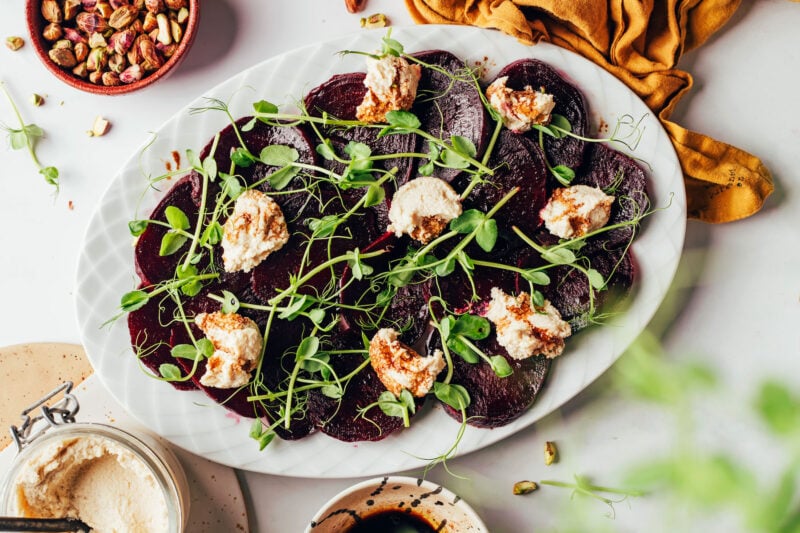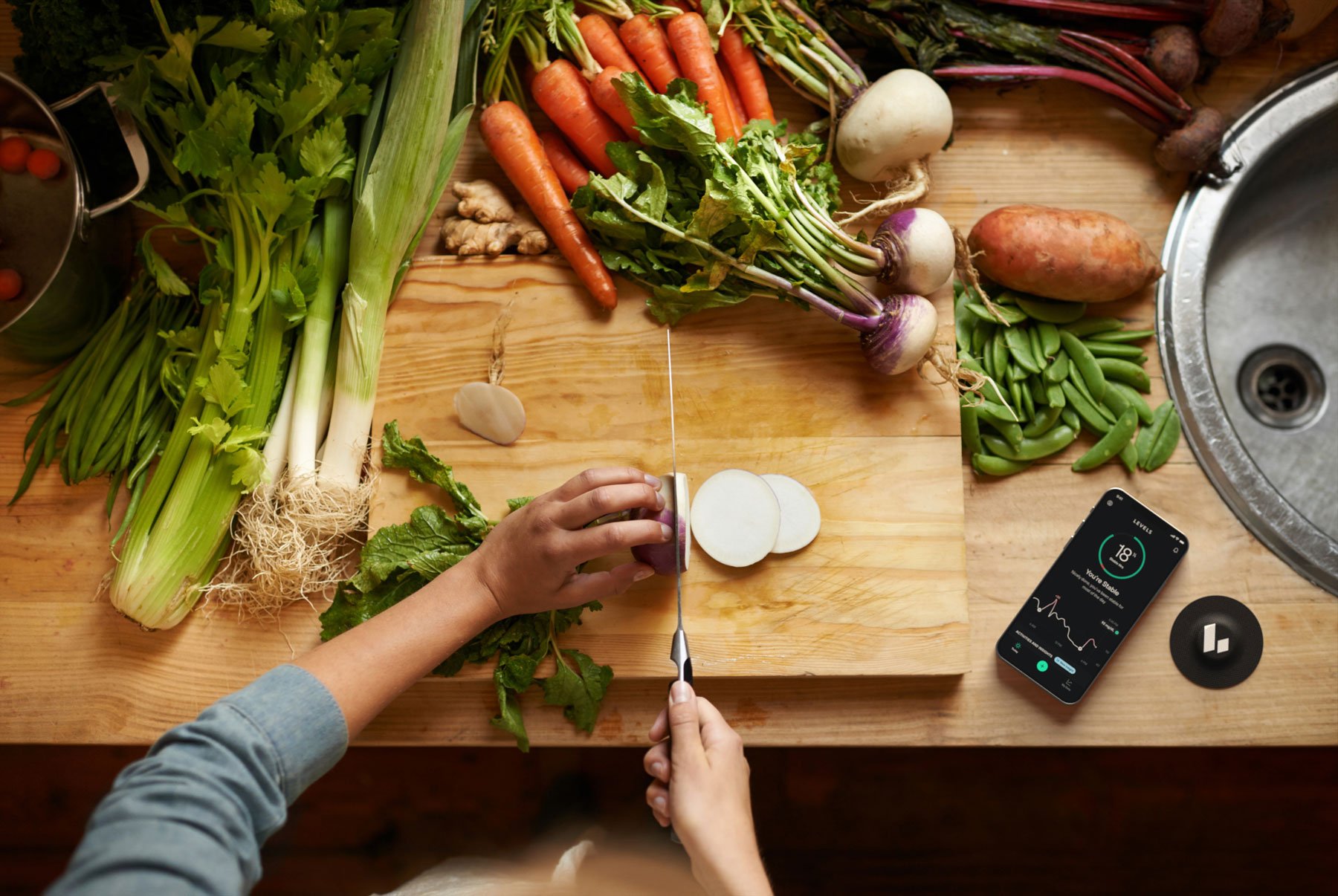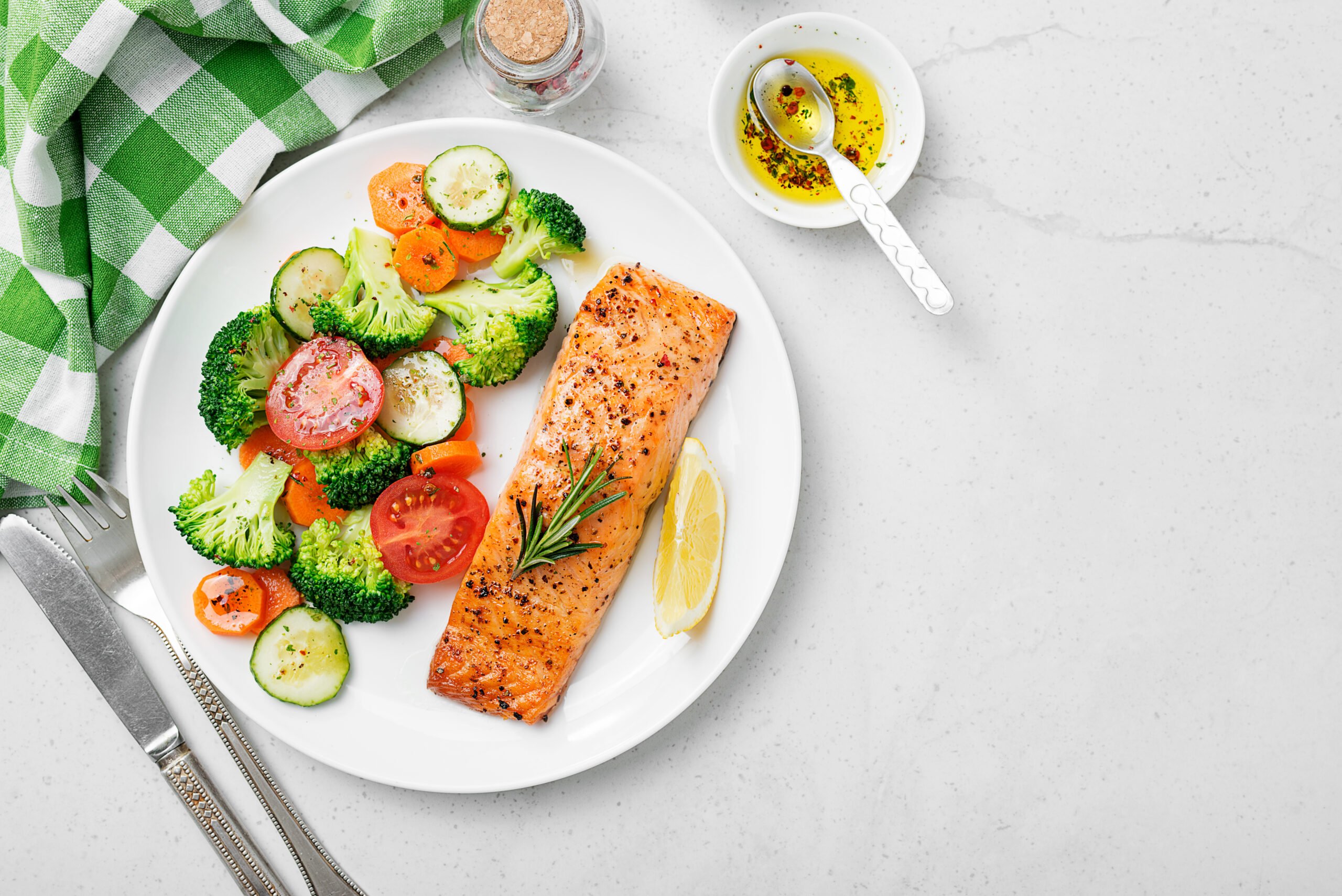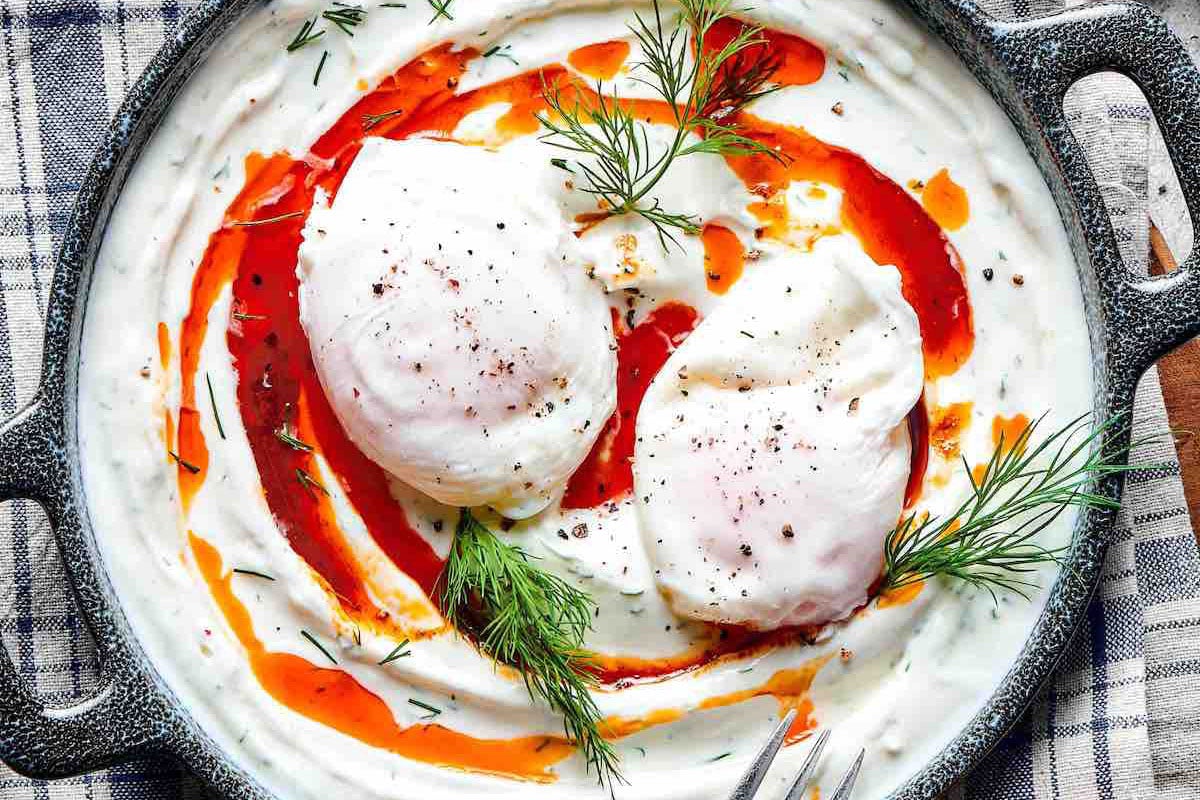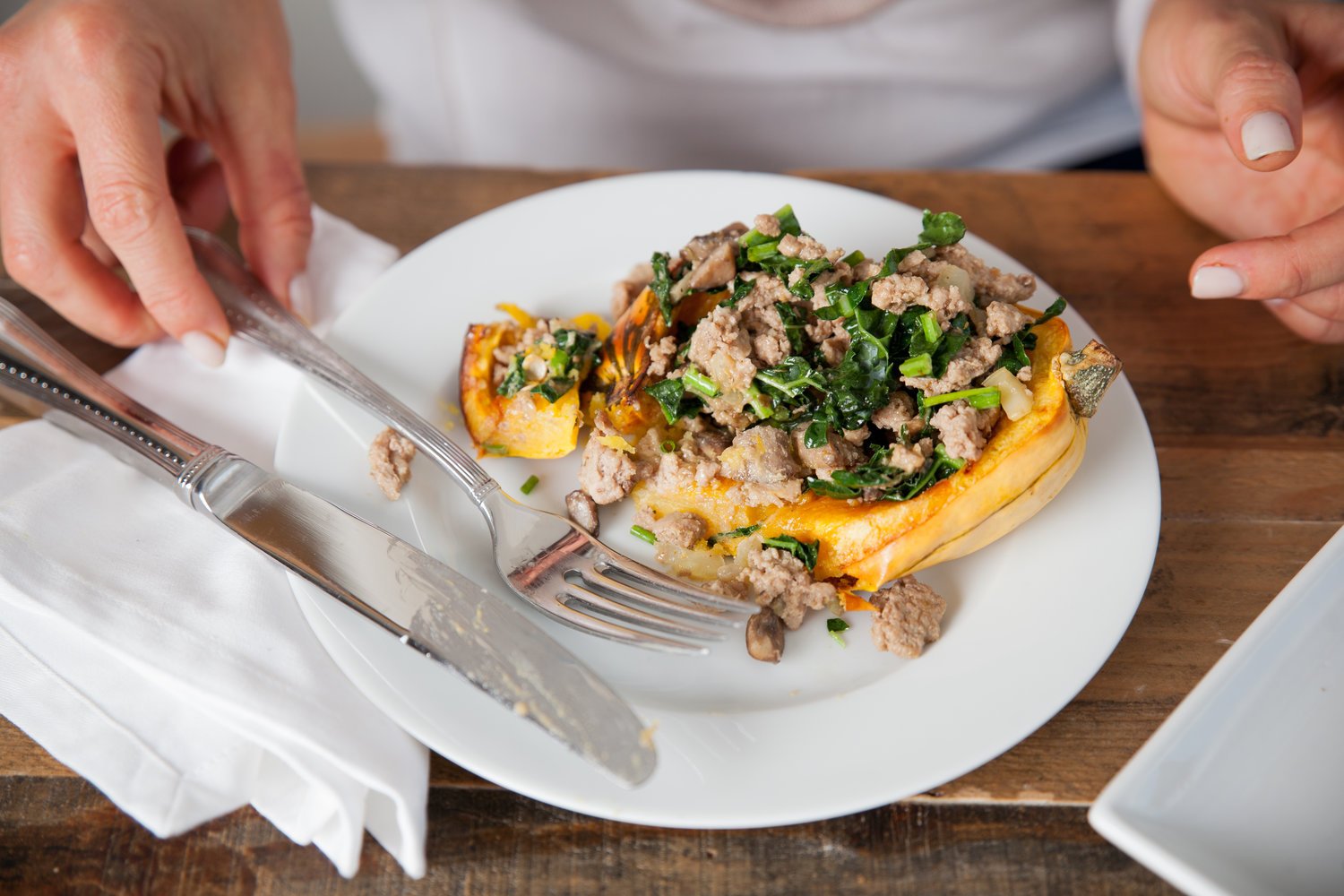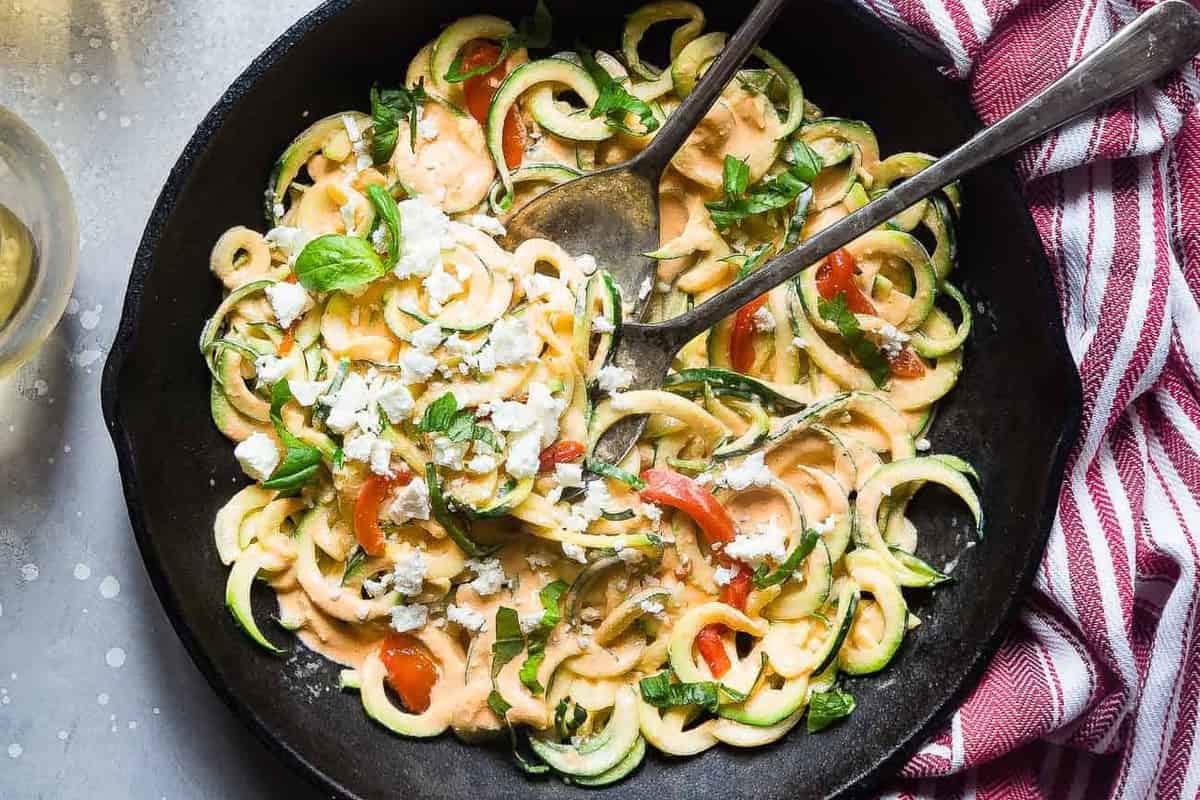Image courtesy Minimalist Baker.
Salads are among the best meals for metabolic health, typically delivering plenty of fiber-rich vegetables, lean protein, and healthy fats in one bowl. But keep in mind: Certain store-bought and restaurant salads contain significant amounts of sugar and carbohydrates from ingredients like salad dressings, croutons, and grains. To sidestep this problem, make the dish yourself and incorporate the best ingredients for metabolic health that deliver essential nutrients and help you avoid a blood sugar spike.
Elements of a Metabolically Healthy Salad
The following five tips will help you build a salad that supports metabolic health.
Start with a nutrient-rich base
There’s nothing wrong with iceberg lettuce, but other leafy greens contain more flavor, fiber, and micronutrients. In particular, dark greens like spinach and kale contain an abundance of manganese, and evidence suggests that this micronutrient may reduce oxidative stress and the associated risks, like insulin resistance and diabetes. Typically, the darker the green, the more nutrients it contains. Consider kale, spinach, arugula, watercress, or a bagged mix—each green has a different nutritional profile, so the more variety, the more nutrients you’ll consume.
Add sources of protein, fiber, and healthy fats
All of these nutrients help slow digestion, which leads to more gradual rises in blood glucose. A good rough target is 20 grams of protein and 6–10 grams of fiber in your salad. Ingredients that can help you reach these goals include protein-rich, responsibly raised meat and wild-caught seafood, fiber-dense produce like red cabbage and avocado, and healthy fats like nuts and seeds.
Make your plate as colorful as possible
Plants contain phytonutrients—beneficial compounds that play a variety of roles in metabolic health—including reducing inflammation, increasing insulin sensitivity, and acting as antioxidants. Different colors of fruits and vegetables indicate different nutrients, so your nutrient consumption will be more significant and diverse when more colors are on your plate. For example, red produce—like tomatoes and pink grapefruit—typically contains lycopene, a micronutrient that may reduce risk of heart disease. The antioxidant beta-carotene is found in yellow and orange foods, such as carrots and bell peppers.
DIY the dressing
Store-bought dressings often contain added sugars like honey, corn syrup, and other sweeteners, refined seed oils like soybean and canola oil, and additives like xanthan gum that may cause stomach discomfort. Instead, make an easy DIY dressing with avocado or extra-virgin olive oil, lemon juice or apple cider vinegar, and herbs, or try these salad dressing recipes.
Swap carb-heavy toppings for nutrient-dense alternatives
Croutons, crispy noodles, and other salad finishers tend to be full of glucose-spiking refined carbs. You can get the same crunchy satisfaction from raw or dry-roasted seeds and nuts or roasted chickpeas or fava beans. Plus, these choices add a little more fiber and protein. Just read the label to be sure they don’t contain added sugars.
Learn more:
16 Salads for Metabolic Health
Here, we’ve rounded up salad recipes that support different nutritional needs and help maximize your intake of metabolically healthy foods.
High-Protein Salads
1. Thai Beef Salad from I Heart Umami
Tangy marinated beef lends 35 grams of protein to this salad that’s topped with spicy chili dressing. Don’t forget the cashew and hemp heart sprinkles on top—they add crunch and fiber.
2. Shrimp Avocado Salad from Trifecta Nutrition
Shrimp is a great salad add-on because it’s quick-cooking and protein-dense. This recipe gets plenty of healthy fats from avocado and avocado oil, while a mix of garlic, cayenne, cilantro, and parsley deepen the flavor.
3. Sesame Chicken Salad from Ambitious Kitchen
Fast-food Asian chicken salads typically contain refined carb-rich ingredients, like fried chow mein noodles. This recipe delivers crunch with raw, shredded green and red cabbage, carrots, and nuts. Skip the sugar in the chicken marinade—you won’t miss it, thanks to all the flavor from coconut aminos, sesame oil, and ginger.
4. Strawberry Chicken Salad from Food Faith Fitness
Though the dressing in this recipe calls for honey, you can skip it since the strawberries add natural sweetness. A mix of pecans, baby spinach, and avocado provide nearly 13 grams of fiber, while goat cheese adds a creamy tang.
5. Keto Tofu Salad with Sesame Dressing from I Eat Keto
Crispy pan-fried tofu gives this salad almost 20 grams of protein. For the most flavor, press the tofu and let it marinate for at least an hour. And feel free to add more veggies—red bell pepper and carrot pair well with the soy-ginger-sesame dressing.
High-Fiber Salads
6. Easy Avocado & Bacon Salad from KetoDiet
This dish has all the flavors of a BLT (plus avocado) in salad form. Opt for a minimally processed bacon like this uncured option from Applegate to avoid unwanted additives and sugars. For more protein, top the salad with a hard-boiled egg or two.
7. Spicy Cashew Chickpea Broccoli Salad from Ambitious Kitchen
Filled with broccoli, red cabbage, carrots, and chickpeas, this Thai-inspired dish delivers 10 grams of fiber. When making the dressing, swap the peanut butter for an alternative like almond butter for more nutrients, and skip the honey—you won’t miss it.
8. Three Bean Salad from Eating Bird Food
A mix of green beans, chickpeas, and kidney beans creates a colorful plate. This dish contains 11 grams of protein, so pair it with an additional source like grilled chicken to up its protein punch.
High-Antioxidant Salads
9. Chopped Salad With Shrimp, Apple, & Pecans from EatingWell
With red apple, radicchio, celery, pecans, carrot, and romaine lettuce, this salad scores high on color, crunch, and micronutrients. You’ll get potassium from radicchio, which when consumed in optimal amounts, can reduce the risk of metabolic syndrome, and vitamin A from carrots, which can help balance blood glucose levels.
10. Roasted Beet and Cherry Salad from Minimalist Baker
This salad makes an excellent side to a protein-rich entree like grilled tofu or chicken. It contains healthy fats from roasted hazelnuts and vegan feta, though you can swap in regular feta for more protein and fat if you prefer. Sweet cherries provide a fair amount of vitamins C, A, and K, as well as antioxidants like beta-carotene.
11. Mediterranean Turkey Salad from Lexi’s Clean Kitchen
Along with 28 grams of protein from a creamy Greek yogurt dressing and ground turkey, this Mediterranean salad gets a bunch of nutrients like potassium from artichokes and iron from spinach.
12. Spinach Berry Antioxidant Salad from The Harvest Kitchen
The dressing in this dish calls for honey, but you can leave it out and let the berries provide the sweetness. A mix of pomegranate arils, spinach, and walnuts provides nutrients like potassium, iron, and copper.
Salads With Healthy Fats
13. Keto Broccoli Salad from The Girl Who Ate Everything
This salad makes an excellent side dish for a backyard barbecue. The broccoli adds both calcium and an antioxidant compound called sulforaphane, and you get healthy fats from a mix of sunflower and pumpkin seeds. Opt for an avocado-oil based mayo to make the dressing—traditional mayo may use seed oils.
14. Green Goddess Salad from Joyful Healthy Eats
Many Green Goddess dressings start with mayo and sour cream, but this version uses protein-rich Greek yogurt. Sunflower seeds and avocado lend additional healthy fats, though you can also use the dressing as dip for raw veggies.
15. Roasted Beet Salad with Vegan “Goat Cheese” from Minimalist Baker
The vegan “goat cheese” that’s central to this dish is made mostly from cashews, which are high in heart-healthy fats as well as magnesium, a mineral that plays a role in blood sugar regulation. Beets and microgreens add fiber, while roasted pistachios give the dish a crunch and a bit more fiber and healthy fats.
16. Chopped Salmon Salad from Primavera Kitchen
Salmon is a great source of omega-3 fatty acids, while avocado and extra-virgin olive oil provide monounsaturated fats. You can speed up prep of this dish by opting for ready-to-eat smoked salmon instead of cooking it yourself.
